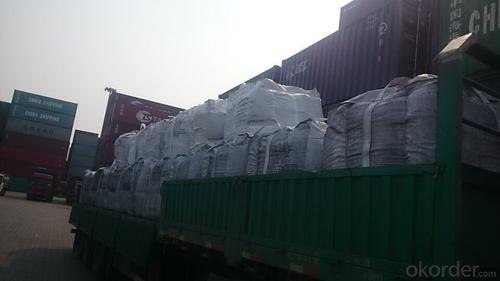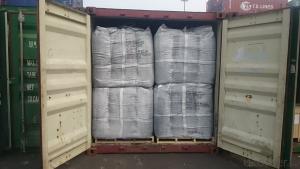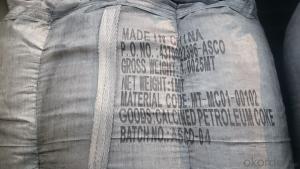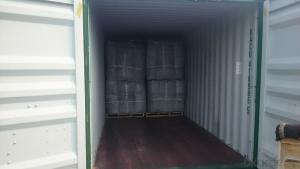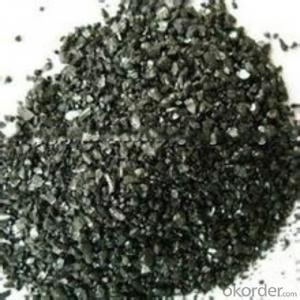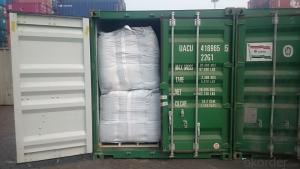GPC with lower Sulphur0.03% max in bigger size
- Loading Port:
- Tianjin
- Payment Terms:
- TT OR LC
- Min Order Qty:
- 20 m.t.
- Supply Capability:
- 5000 m.t./month
OKorder Service Pledge
OKorder Financial Service
You Might Also Like
Introduction:
GPC has good characteristics with low ash, low resistivity, low sulphur, high carbon and high density. It is the best material for high quality carbon products. It is used as carbon additive in steel industry or fuel.
Features:
1.Our strong team provide you reliable service that make you feel purchasing is more easier
2. We ensure that we can supply capability with competitive price.
3. Work strictly to guarantee product quality,
4. Highest standard of integrity. Guarantee customer's benefit.
5. Supplying Pet Coke, Met coke, Foundry Coke, Carbon Raiser etc.
Specifications:
F.C.% | 95MIN | 94MIN | 93MIN | 92MIN | 90MIN | 85MIN | 84MIN |
ASH % | 4MAX | 5MAX | 6 MAX | 6.5MAX | 8.5MAX | 12MAX | 13MAX |
V.M.% | 1 MAX | 1MAX | 1.0MAX | 1.5MAX | 1.5MAX | 3 MAX | 3 MAX |
SULFUR % | 0.3MAX | 0.3MAX | 0.3MAX | 0.35MAX | 0.35MAX | 0.5MAX | 0.5MAX |
MOISTURE % | 0.5MAX | 0.5MAX | 0.5MAX | 0.5MAX | 0.5MAX | 1MAX | 1MAX |
Pictures
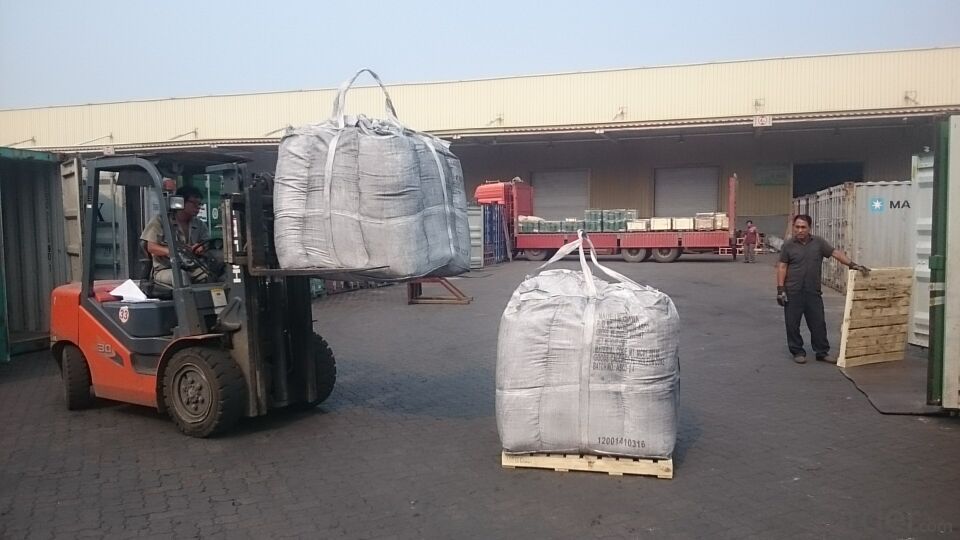
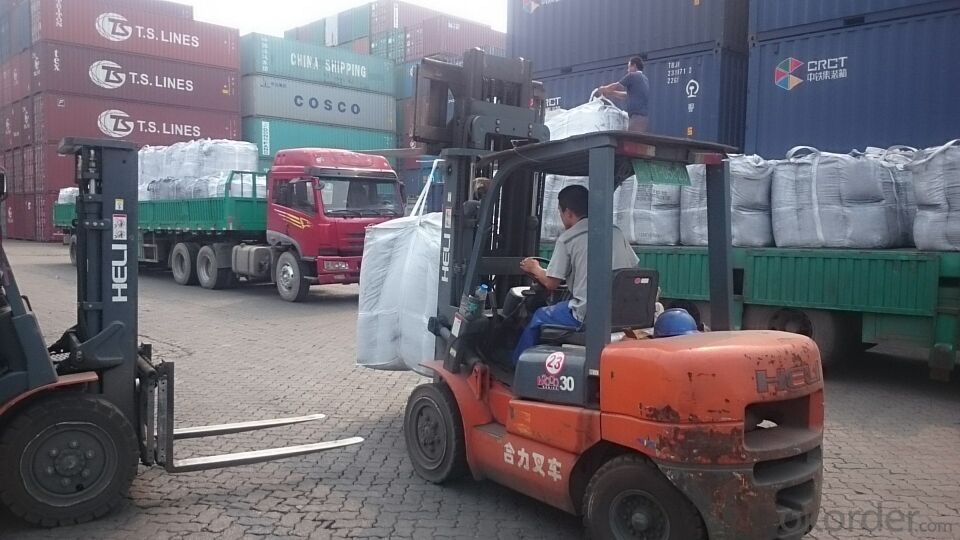
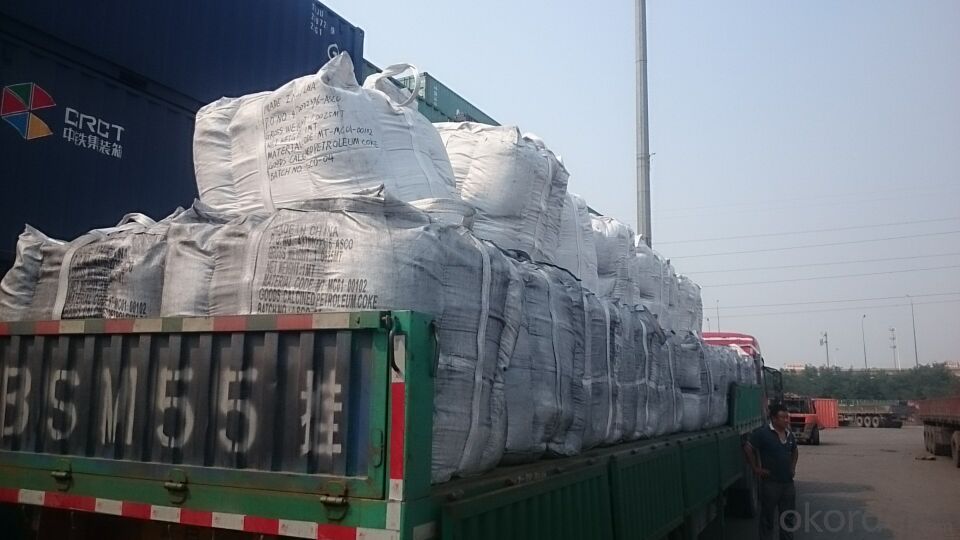
FAQ:
1. Your specification is not very suitable for us.
Please offer us specific indicators by TM or email. We will give you feedback as soon as possible.
2. When can I get the price?
We usually quote within 24 hours after getting your detailed requirements, like size, quantity etc. .
If it is an urgent order, you can call us directly.
3. Do you provide samples?
Yes, samples are available for you to check our quality.
Samples delivery time will be about 3-10 days.
4. What about the lead time for mass product?
The lead time is based on the quantity, about 7-15 days. For graphite product, apply Dual-use items license need about 15-20 working days.
5. What is your terms of delivery?
We accept FOB, CFR, CIF, EXW, etc. You can choose the most convenient way for you. Besides that,
we can also shipping by Air and Express.
6. Product packaging?
We are packed in bulk ship or in ton bag or placing in container or according to your requirements.
7. Notice
please note that the price on Alibaba is a rough price. The actual price will depends on raw materials, exchange rate wage and your order quantity .Hope to cooperation with you, thanks !
- Q: How is carbon used in the production of diamonds?
- Carbon is used in the production of diamonds through a process called high-pressure high-temperature (HPHT) synthesis. In this method, pure carbon is subjected to extremely high pressures and temperatures, replicating the conditions found deep within the Earth's mantle where natural diamonds form. By applying these conditions, carbon atoms rearrange and bond together, resulting in the formation of synthetic diamonds.
- Q: How does carbon impact the prevalence of tsunamis?
- Carbon does not directly impact the prevalence of tsunamis. Tsunamis are primarily caused by seismic activity, such as earthquakes or volcanic eruptions, which are unrelated to carbon emissions. However, rising carbon levels can contribute to global climate change, leading to the melting of polar ice caps and potentially increasing the risk of coastal flooding, which can indirectly amplify the impact of a tsunami.
- Q: What is the carbon content of different types of soil?
- The carbon content of different types of soil can vary significantly depending on factors such as vegetation cover, climate, and land use. Generally, soils with abundant plant growth and organic matter tend to have higher carbon content. For example, forest soils typically have higher carbon content compared to agricultural or desert soils. Additionally, the carbon content can vary within soil profiles, with surface layers often containing more carbon than deeper layers.
- Q: What are the different types of carbon-based inks?
- There are several different types of carbon-based inks that are commonly used in various applications. One type is carbon black ink, which is made by burning organic materials such as wood or petroleum products in an oxygen-depleted environment. This ink is known for its deep black color and is often used in printing and calligraphy. Another type is carbon nanotube ink, which is made by dispersing carbon nanotubes in a liquid medium. Carbon nanotubes are tiny cylindrical structures made of carbon atoms, and their unique electronic properties make them useful in applications such as flexible electronics and energy storage devices. There is also graphene ink, which is made by dispersing graphene flakes in a liquid medium. Graphene is a single layer of carbon atoms arranged in a hexagonal lattice, and it has exceptional strength, electrical conductivity, and flexibility. Graphene ink is used in various applications, such as flexible electronics, sensors, and batteries. Additionally, there are conductive carbon-based inks that are used in electronics and circuitry. These inks typically contain a mixture of carbon particles and a binder material, and they are used to create conductive traces on substrates such as paper or plastic. Overall, carbon-based inks offer a wide range of possibilities due to the unique properties of carbon materials. They are used in various fields, including printing, calligraphy, electronics, energy storage, and more.
- Q: How does carbon impact the prevalence of earthquakes?
- Carbon does not directly impact the prevalence of earthquakes. Earthquakes are primarily caused by the movement of tectonic plates and the release of built-up stress along fault lines. However, carbon emissions and climate change can indirectly affect the frequency and intensity of earthquakes by contributing to the melting of glaciers and polar ice caps, which in turn can lead to changes in the Earth's crust and the redistribution of its mass. These changes can potentially influence the occurrence of seismic activities.
- Q: What are the consequences of increased carbon emissions on social inequality?
- Increased carbon emissions have significant consequences on social inequality. Firstly, the impacts of climate change, driven by carbon emissions, disproportionately affect marginalized communities who often lack the resources and infrastructure to adapt or recover from extreme weather events, such as floods, droughts, and storms. This exacerbates existing inequalities and widens the gap between the rich and the poor. Secondly, the burning of fossil fuels, a major contributor to carbon emissions, disproportionately affects low-income communities who are more likely to live near industrial areas or power plants. This exposure to air pollution leads to higher rates of respiratory diseases and other health issues, further deepening social inequality as access to quality healthcare is often limited for these communities. Moreover, the consequences of climate change, such as agricultural disruptions, water scarcity, and increased food prices, can lead to social unrest, migration, and conflicts, disproportionately impacting vulnerable populations. This creates a ripple effect on social and economic stability, further marginalizing already disadvantaged groups. Addressing carbon emissions and mitigating climate change is crucial for reducing social inequality. Transitioning to renewable energy sources, investing in sustainable infrastructure, and implementing policies that prioritize the needs of marginalized communities can help alleviate the burden on those most affected and promote a more equitable society.
- Q: What are carbon-based superconductors?
- Carbon-based superconductors are a type of material that exhibit superconductivity, a phenomenon where electrical resistance drops to zero at low temperatures. Unlike conventional superconductors, which are typically metallic elements or alloys, carbon-based superconductors are composed primarily of carbon atoms. These materials are known for their unique structure and properties, which make them highly efficient conductors of electricity when cooled below a certain critical temperature. Carbon-based superconductors can be categorized into two main types: organic superconductors and fullerene superconductors. Organic superconductors are made up of carbon-based molecules, such as organic salts or polymers, which form a crystal lattice structure. These materials have been extensively studied and have shown promising superconducting properties at low temperatures. Fullerene superconductors, on the other hand, are composed of carbon molecules arranged in a specific cage-like structure, called fullerenes. The most well-known fullerene is C60, also known as a buckyball, which consists of 60 carbon atoms arranged in a soccer ball-like shape. By doping these fullerene cages with certain elements, such as alkali metals or transition metals, their superconducting properties can be enhanced. What makes carbon-based superconductors particularly interesting is their potential for high-temperature superconductivity. While most conventional superconductors require extremely low temperatures close to absolute zero (-273.15°C or -459.67°F) to exhibit superconductivity, some carbon-based superconductors have been found to retain their superconducting properties at relatively higher temperatures. This property is crucial for practical applications, as it allows for easier cooling and opens up possibilities for widespread use of superconductivity in various fields, including energy transmission, magnetic levitation, and quantum computing. However, it is important to note that carbon-based superconductors are still an active area of research, and many challenges remain in understanding their mechanisms and improving their superconducting properties. Nonetheless, the discovery and exploration of these materials hold great promise for advancing the field of superconductivity and enabling new technological breakthroughs.
- Q: What are the consequences of increased carbon emissions on political stability?
- Increased carbon emissions can have significant consequences on political stability. One of the main consequences is the exacerbation of environmental challenges and natural disasters. As carbon emissions contribute to global warming, the frequency and intensity of extreme weather events such as hurricanes, droughts, and flooding increase. These disasters can lead to displacement of communities, destruction of infrastructure, and loss of lives, all of which can have a destabilizing effect on societies. Moreover, the economic impact of increased carbon emissions can also create political instability. As climate change affects agriculture, water resources, and energy production, it can lead to economic disturbances, unemployment, and rising food prices. These economic hardships can fuel social unrest, protests, and even conflicts, particularly in countries that heavily rely on these sectors for their livelihoods. Additionally, the consequences of increased carbon emissions can exacerbate existing social and political tensions. Climate change often disproportionately affects vulnerable populations, such as communities in developing countries or marginalized groups. This inequality can aggravate social inequalities, increase social unrest, and lead to political instability as marginalized communities demand action and justice. Furthermore, the global nature of climate change necessitates international cooperation and agreements to effectively address the issue. However, increased carbon emissions can strain diplomatic relations, particularly between countries that have differing views on climate action. Disagreements over carbon reduction targets, carbon trading mechanisms, and financial contributions can lead to diplomatic tensions and hinder global cooperation, which may consequently impact political stability. In conclusion, increased carbon emissions have far-reaching consequences on political stability. From environmental challenges and natural disasters to economic disturbances and social tensions, the consequences of carbon emissions can strain societies and governments. To ensure political stability, it is imperative that global efforts are made to reduce carbon emissions and mitigate the impacts of climate change.
- Q: How long will it last? 10National Day would like to do carbon baking ribs at home, how to do, how to marinate? For how long?.. Don't copy sticky posts. Now, tour TV's "eating meat" on earth is recorded in a grilled pork chop, wondering how that is done
- Drain the spareribs until it is dryThis can save you a lot of timeMarinate it for only about fifteen minutes with gingerIf it's thawed, pour some white wineThen mix it with salt and drain the oilFinally, dressed with bamboo ribsWhen baking, brush some oil and turn it several times halfwayThen you can use barbecue sauce when it's readyIf you don't need barbecue sauce, then mix it with salt and monosodium glutamate, and brushFinally sprinkle five spice powder, chili powder and cumin powderFinally, sprinkle chopped green onionThe time is about 8 minutesHowever, oil, not prepared in advanceAt least 30 minutes
- Q: Just come out to work, do activated carbon, often see carbon materials and carbon materials, I do not know what the difference, trouble you!
- Carbon refers to elements. Carbon materials usually refer to materials that contain carbon and are the main bodyCarbon is a carbon containing substance of no composition and property consisting of carbon elementsCarbon materials are usually specified, especially carbon and graphite materialsCarbon material is a broad carbon containing materialAbove.
Send your message to us
GPC with lower Sulphur0.03% max in bigger size
- Loading Port:
- Tianjin
- Payment Terms:
- TT OR LC
- Min Order Qty:
- 20 m.t.
- Supply Capability:
- 5000 m.t./month
OKorder Service Pledge
OKorder Financial Service
Similar products
Hot products
Hot Searches


